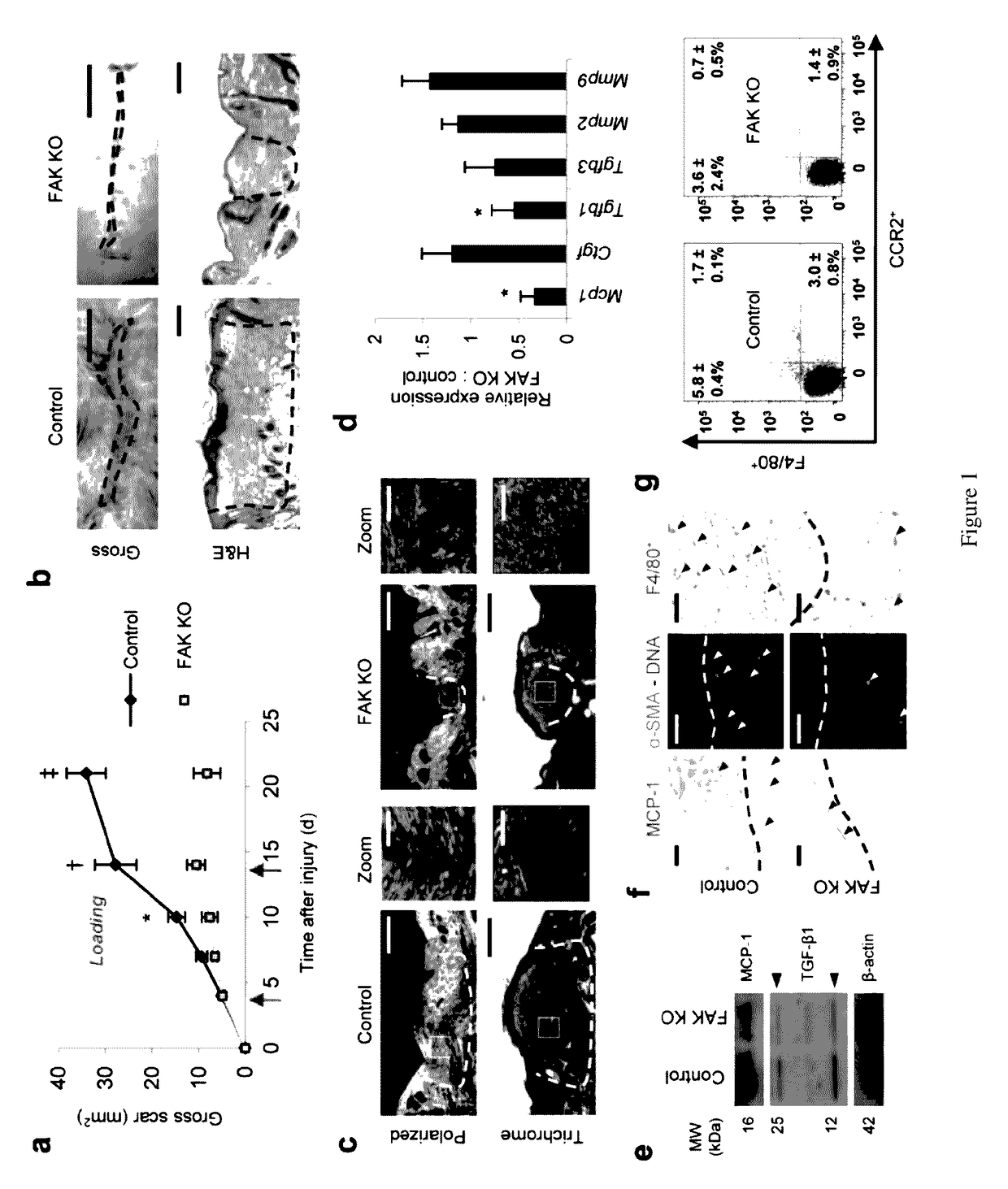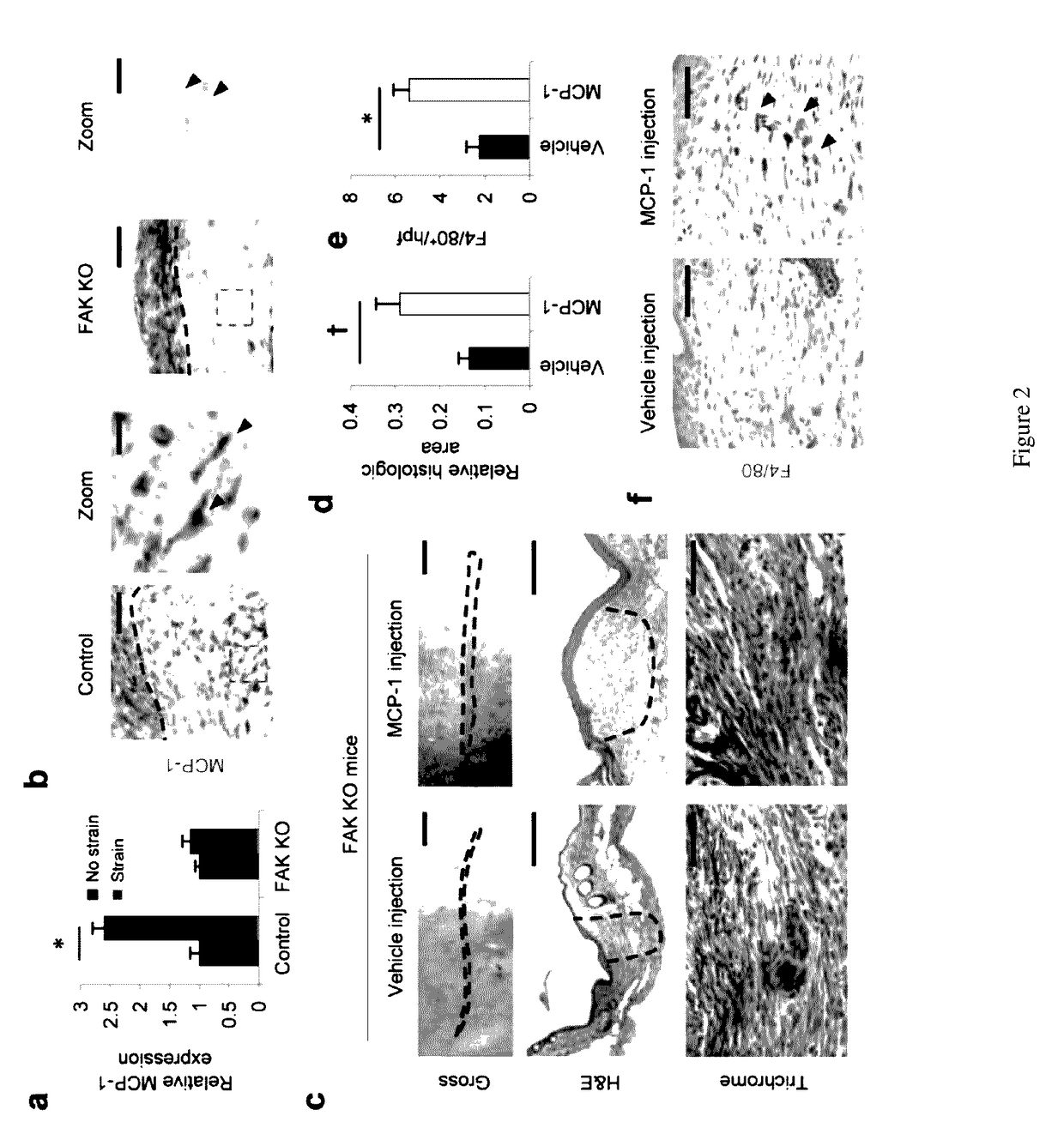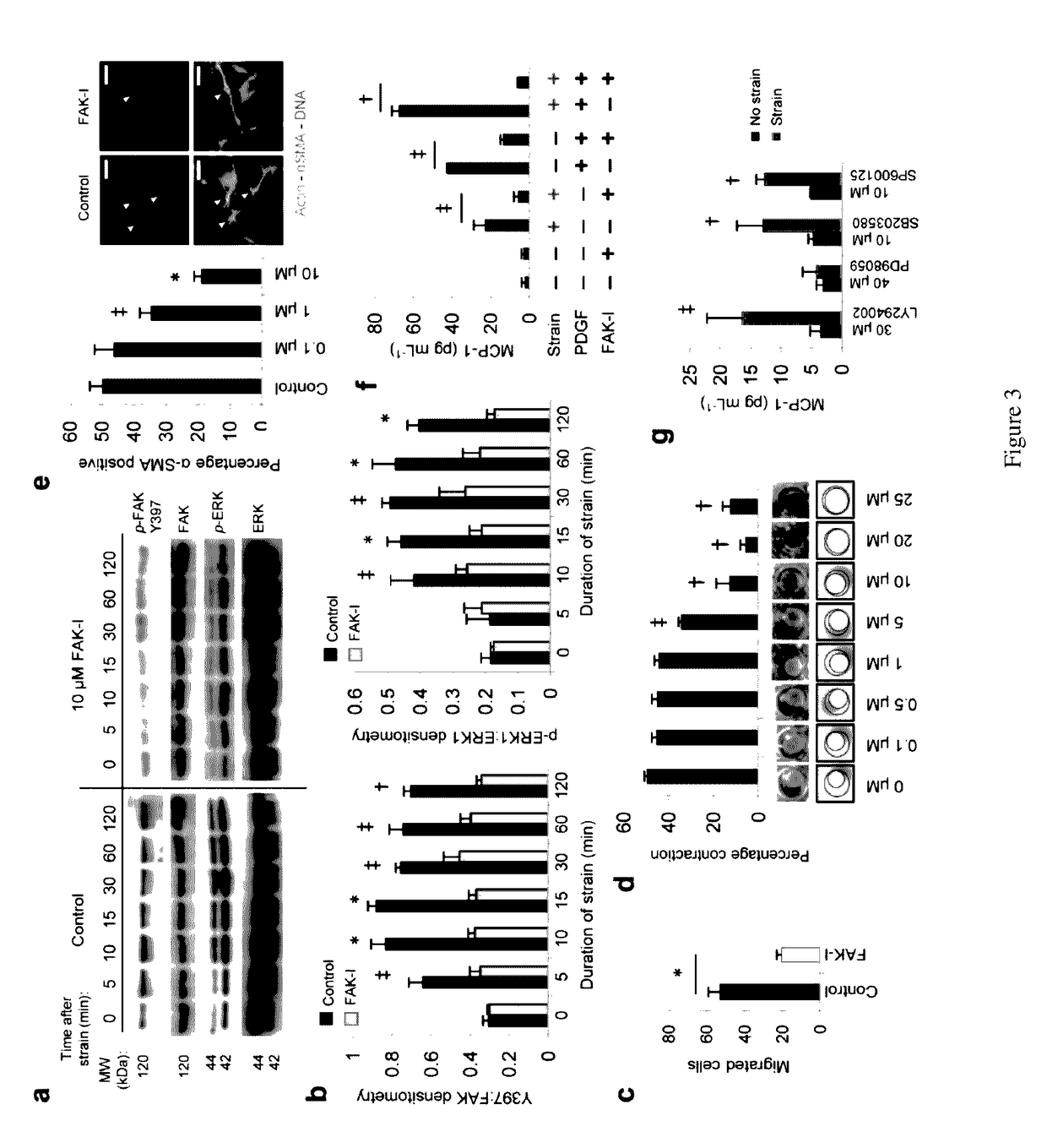Inhibition of focal adhesion kinase for control of scar tissue formation
a technology of focal adhesion kinase and scar tissue, which is applied in the direction of biocide, animal husbandry, organic active ingredients, etc., can solve the problems of stigma of disfigurement, permanent functional loss, and affect the extracellular matrix, so as to reduce the scar area and reduce the scar area
- Summary
- Abstract
- Description
- Claims
- Application Information
AI Technical Summary
Benefits of technology
Problems solved by technology
Method used
Image
Examples
example 1
Focal Adhesion Kinase Links Mechanical Force to Skin Fibrosis Via Inflammatory Signaling
[0069]Exuberant fibroproliferation is a common complication following injury for reasons that remain poorly understood. One important component of wound repair that is often overlooked is mechanical force, which regulates cell-matrix interactions through intracellular focal adhesion components including focal adhesion kinase (FAK). Here we report that FAK is activated following cutaneous injury and that this process is potentiated by mechanical loading. Fibroblast-specific FAK knockout (KO) mice exhibit significantly less inflammation and fibrosis in a model of hypertrophic scar (HTS) formation. We demonstrate that FAK acts via extracellular-related kinase (ERK) to mechanically trigger the secretion of monocyte chemoattractant protein-1 (MCP-1 / CCL2), a potent chemokine linked to human fibrotic disorders. Similarly, MCP-1 KO mice form minimal scar, indicating that inflammatory chemokine pathways a...
PUM
| Property | Measurement | Unit |
|---|---|---|
| time | aaaaa | aaaaa |
| time | aaaaa | aaaaa |
| time | aaaaa | aaaaa |
Abstract
Description
Claims
Application Information
 Login to View More
Login to View More - R&D
- Intellectual Property
- Life Sciences
- Materials
- Tech Scout
- Unparalleled Data Quality
- Higher Quality Content
- 60% Fewer Hallucinations
Browse by: Latest US Patents, China's latest patents, Technical Efficacy Thesaurus, Application Domain, Technology Topic, Popular Technical Reports.
© 2025 PatSnap. All rights reserved.Legal|Privacy policy|Modern Slavery Act Transparency Statement|Sitemap|About US| Contact US: help@patsnap.com



